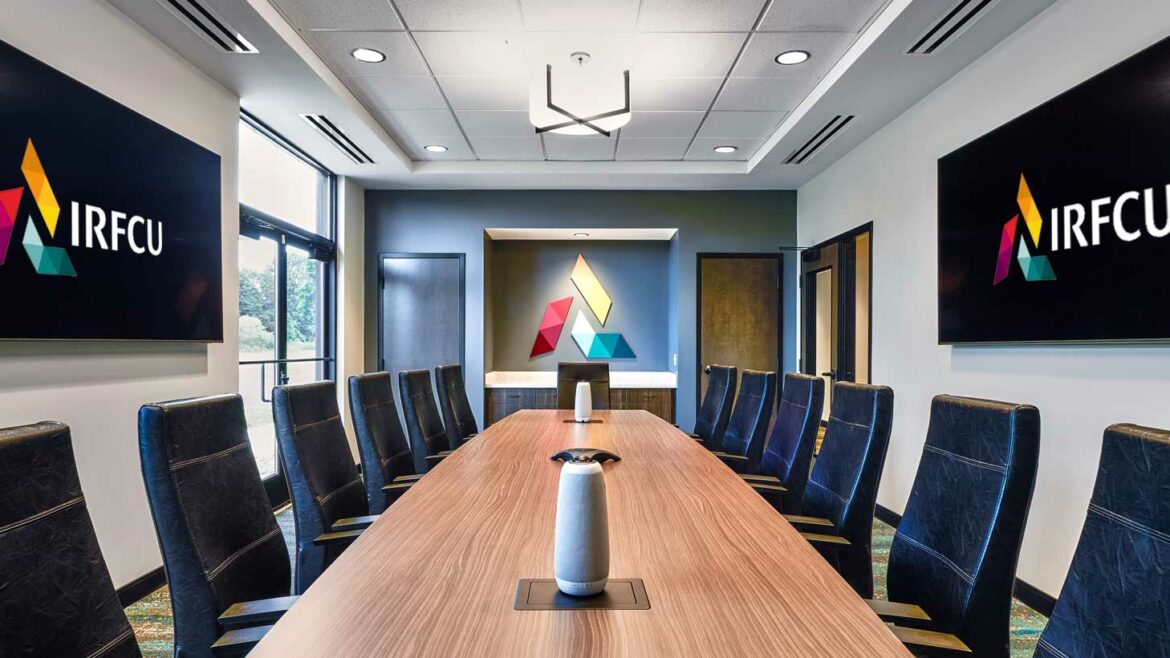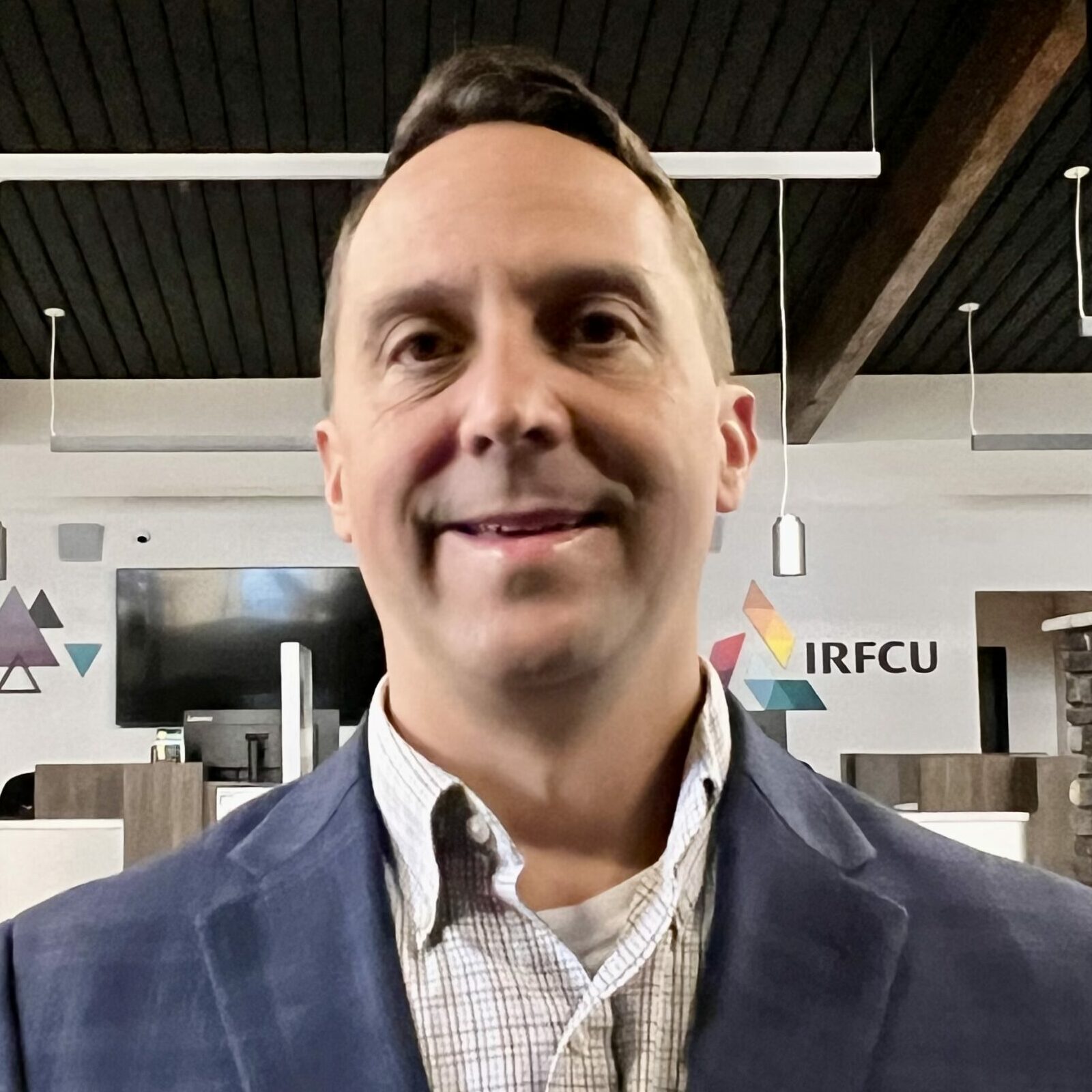I recently had the privilege of speaking with Thomas Mitchell, CEO of Ingersoll Rand Federal Credit Union, from their brand-new Sayre, PA headquarters. IRFCU is part of the rkGoBig collaboration CUSO, where I serve as the COO.
When he took over in 2018, Thomas already knew there was a need for something tangible to change, but the possibility of releasing a new banking feature for their members, let alone a brand-new space, was not in sight.
Unfortunately, small credit unions merging out of existence is not a new topic, but Thomas knew he wanted to avoid it. They needed to innovate to succeed and keep the community they love thriving.
Their roadmap for ongoing relevance follows a “simple” and brave commitment to their members, employees, and community.
Nate: We’re going to start very top level here: What is IRFCU’s mission?
Thomas: Very, very high level? Stay relevant in the community. We knew we had to get off cruise control and be daring. The very first thing we wanted to do was offer RDC (remote deposit capture.) We went to our legacy core provider, and it was a $25k project. We didn’t have that sitting around! Something basic that everyone else has.
That setback spurred us to get even more creative, and collaboration was the way to do that. It’s how we met y’all at rkGoBig—using collaboration to minimize costs and afford some of the things we need to offer our members. Let’s partner with a core provider (we went with CU*Answers) that we can have ownership in and have a say; it was wonderful for us and afforded us the ability to give our members all those basic things we didn’t even dream of five years ago.
It’s not just affordable; it’s profitable.
Do you have a framework for growth that helps you stay on your relevance mission?
Right. So, when we start looking at any initiative, we always work off of: “Is that best for the members? Is that best for the employees?” If it doesn’t answer those questions in the affirmative, we don’t waste our time. Doing that makes every other decision fall into place easily. There are no roadblocks or hurdles when fighting for your members and employees.
How do you know what’s best for your members?
We know we don’t want it to negatively impact them financially. We want it to be something they need and ask for, to be relevant. In our last building, members would walk right into my office and TELL me exactly what they wanted!
There are also things they don’t know that they want or need that improve their financial wellness—whether they ask for it or not. Things like SavvyMoney and early access to ACH are things they love, and we couldn’t have dreamt of offering these things five years ago. Easy yesses.
You talked there about giving members what they need but also indulging in an innovation component for your credit union. “WE think they’re going to love it.” There’s a balance there, right?
On the innovation side, necessity is the seed of invention. We are very active in the school district. We had branches in the schools, but then Covid hit. And even when it faded, the schools didn’t operate the same. We were always very cognizant of how we impacted them. And we told them. “We’re out. We want to help you however we can, but we do not want to be another problem for you to solve.”
So how do we still show up at schools and other businesses and not impose on them? Well, that’s where we came up with the mobile branch idea. We quite literally rolled out a large truck with a branch inside it. It’s there to HELP the members. We don’t need our own space inside of those spaces now.
It also (coincidentally) helped us innovate our marketing. We show up at local parades and farmers’ markets and are out in the community MORE than we ever were before. We are more relevant as a result.
I really love the reframe of the problem. Instead of “How do we stay in the schools?” it’s “How might we stay relevant to the schools?” Are there any other initiatives that moved your “relevance needle” in the right direction?
One of the things we always talk about internally is that we want to make it so nobody leaves IRFCU. To do that, we knew we would have to provide member service at an elite level. By the end of the year, every one of our staff members will be a certified financial counselor, giving them the ability to help anyone who comes in the door.
Have you noticed your employee turnover going down?
We have none.
I’m sorry, can you repeat that?
Well, very little beyond retirement. It’s an employee-first culture. We wear lots of hats, and being educated in each one keeps people going. We also hire people outside of the financial world. We just hired someone from a car dealership (brought him over from the dark side). He told me, “I go to leave at the end of the day, and I made five people’s days better!”
One of our loan officers is a biologist. He should not be in finance! But having people like that gives us and them a different perspective on how to serve our members.
We also make them go on vacation and pay them to do it. We implemented our PPV (paid vacation) program a few years ago, giving each employee $5000 to take five days off and do a bucket list experience. It’s all about them, but it’s also the experiences that they bring back to the rest of the staff and, ultimately, the membership.
Our staff has had many “first” experiences in the last three years, from flying to cruising and hiking and the typical destinations spots to more interesting experiences like fine dining and VIP event experiences.
Having that diversity of context can do wonders for innovation. The group think can get pretty bad otherwise.
Getting stuck on “we’ve always done it this way…” you HAVE to explore an idea if someone thinks something can be improved. I can have a student intern come in and blow a whole process out of the water. I not only welcome that but encourage it.
That fixed mindset will nearly always get in the way of doing cool stuff. And speaking of cool stuff—you have a new headquarters! When did it become apparent that you had to get out of your old place?
2011? [Laughter] Our old location was not well-traveled. We got forgotten about it. So, how do we become relevant? We looked for the highest-traffic street in the county, and that’s where we ended up. We also needed the building’s structure and design to show we would be here for a while. We’re not going anywhere. We’re strong.
How long did it take?
Four years. We had a bid that was several million over budget, and we had to scrap it, which set us back another year, but the design we have now is better than what we had, and we’re happier with it.
What were the pivotal elements in the design?
The lobby needed to be open and inviting. Sitting across from someone behind a desk can be intimidating.
It reminds people of work!
We called it “being at the principal’s office!” We wanted people to be away from a confrontational experience.
We also created a second space upstairs for the community—a neutral community territory under our roof.
Lastly, we had a vision to integrate a business from the community into our building to create a long-lasting impact. Now, we have a coffee shop in our building run by Penn-York Opportunities, which provides human services and support for people with disabilities and gives people in our community who may not feel like they have employment options a chance to work. It’s a perfect collaboration for us.
Okay, last question: what’s next in the innovation pipeline?
Small businesses are underserved everywhere. Think about the local ice cream shop that needs a $15k machine. They don’t need or want a $300k loan. So, earlier this year, we rolled out small business accounts.
We want to keep small businesses operating in our community. Offering products and services specifically for them is the focus for us. Small credit unions can do this better than the big banks. We’re talking about small-dollar loans to businesses that help sponsor your kids’ soccer teams.
I lied. One more. Do you feel like IRFCU is relevant today?
Literally today? We are MUCH more relevant than we were in 2018, and so much of what we discussed is why. Collaborate—with CUSOs or not. Get creative—partner with local businesses and organizations. Give the value, and you never know what will come back.
























































